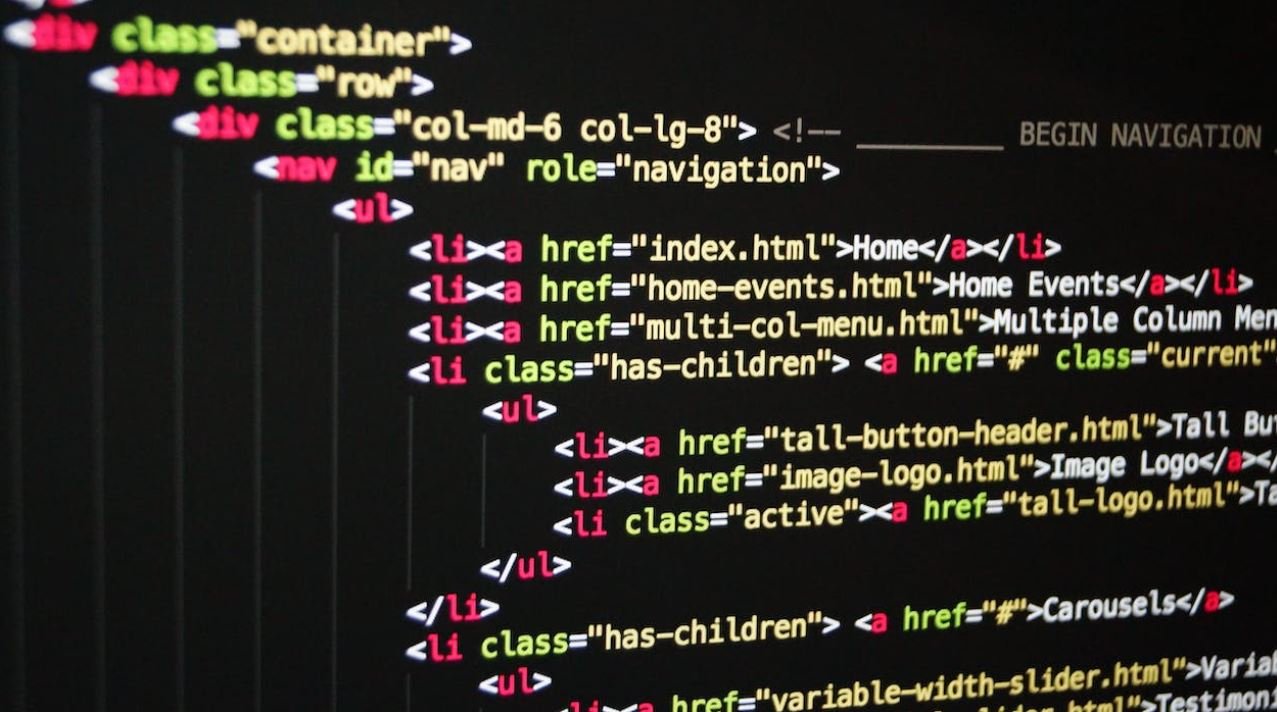Deep Fake: How Is It Done?
Deepfake technology has become increasingly prevalent in recent years, raising concerns about the manipulation of digital content. This article will explore the process of creating deep fakes and shed light on some of the techniques used.
Key Takeaways:
- Deep fakes are AI-generated digital media that manipulate or fabricate audio, video, or images.
- Advanced machine learning algorithms analyze and synthesize large datasets to generate highly realistic fake content.
- Deepfake technology can be misused to spread misinformation, defame individuals, and deceive the public.
Deepfake creation involves several steps, starting with data collection. The AI model requires a substantial amount of real footage or images (known as the source data) to learn from. The more diverse the dataset, the better the deepfake output.
*Interestingly*, it is possible to create deep fakes even with a limited amount of source data, thanks to advancements in transfer learning.
Once enough data is collected, the next step is preprocessing. This involves normalizing the collected data, aligning faces, and removing artifacts or noise. The aim is to create a clean and consistent dataset for training the deep learning model.
After preprocessing, the main training phase begins. Popular deep learning architectures, such as convolutional neural networks (CNNs) or generative adversarial networks (GANs), are commonly used for generating deepfakes.
GANs consist of two neural networks: the generator and the discriminator. The generator network generates the fake content, while the discriminator network tries to determine if the content is real or fake. The networks play a “cat and mouse” game, improving their performance iteratively.
*Remarkably*, GANs have the ability to learn the distribution of the training data, enabling them to create highly realistic deepfakes.
Data Collection Process for Deepfakes:
| Step | Description |
|---|---|
| 1 | Collect a diverse range of source data, including images, videos, or audio clips. |
| 2 | Compile a large dataset to feed to the deep learning model, ensuring sufficient variation. |
| 3 | Curate and preprocess the collected data by removing noise, aligning faces, and standardizing formats. |
Training Phase for Deepfakes:
| Step | Description |
|---|---|
| 1 | Choose a deep learning architecture, such as GANs or CNNs. |
| 2 | Train the generator network to create realistic content. |
| 3 | Train the discriminator network to identify the generated content. |
| 4 | Iteratively improve the performance of both networks by providing feedback. |
While deepfakes have garnered attention for their negative implications, they are not inherently malicious. The technology can also be used for creative purposes, such as in the film industry for visual effects or in virtual reality applications.
It is crucial to raise awareness about the potential risks posed by deepfakes and to develop robust detection methods to mitigate their harmful effects. Vigilance and education are vital for individuals to critically evaluate the authenticity of digital content.
*To emphasize*, understanding the process behind deepfake creation enables us to stay informed and take proactive measures in countering the misuse of this technology.

Common Misconceptions
Misconception 1: Deep Fake technology always involves altering videos
One common misconception about Deep Fake technology is that it is used solely for altering videos. While it is true that Deep Fake technology is often used to create realistic fake videos, it can also be applied to other forms of media, such as images and audio files.
- Deep Fake technology can be utilized for modifying images, distorting facial features, or creating entirely new images of individuals.
- Audio Deep Fakes can mimic someone’s voice and make it seem like they are saying something they never actually said.
- It is also possible to create Deep Fakes of text, generating written content that appears to be written by a specific person.
Misconception 2: Deep Fakes are always created for malicious purposes
Another misconception surrounding Deep Fake technology is that it is always used with malicious intent to deceive or manipulate others. While there have been instances where Deep Fakes have been used for harmful purposes, such as spreading misinformation or defaming individuals, this technology also has positive applications.
- Deep Fakes can be employed in the entertainment industry to produce realistic special effects and generate lifelike computer-generated characters.
- Researchers use Deep Fakes for educational purposes, such as simulating historical figures or teaching emotions and empathy.
- Deep Fake technology can assist in forensic investigations by enhancing images or reconstructing crime scenes.
Misconception 3: Detecting Deep Fakes is impossible
Many people believe that Deep Fakes are so realistic that they are impossible to detect. While it is true that Deep Fake technology has become increasingly sophisticated, researchers and experts are actively developing methods to detect and differentiate between genuine and fake digital content.
- Researchers are developing algorithms that analyze inconsistencies in facial movements, unnatural blinking patterns, or unusual audio artifacts to identify Deep Fakes.
- Deep learning models are being trained to detect anomalies and inconsistencies in the visual and audio elements of Deep Fakes.
- Collaborative efforts between technology companies, academia, and governments aim to create open-source tools and frameworks to combat Deep Fakes.
Misconception 4: Deep Fakes only require high-end technology
There is a misconception that creating Deep Fakes requires access to high-end technology and extensive expertise. While having advanced hardware and knowledge in areas like machine learning and computer vision can certainly improve the quality of Deep Fakes, it is not always a requirement.
- Open-source libraries and tools, such as TensorFlow and PyTorch, make Deep Fake creation more accessible to a broader range of individuals.
- Deep Fakes can be created using consumer-grade hardware, although more powerful machines can expedite the process.
- Numerous online tutorials and resources are available for beginners to learn about Deep Fakes and start creating them from scratch.
Misconception 5: Deep Fakes will entirely undermine trust in media
While Deep Fakes indeed raise concerns about fake news and media manipulation, the fear that they will completely erode trust in media is an overgeneralization. Deep Fakes exist alongside multiple other technologies and techniques that can also be used to deceive or manipulate.
- The presence of Deep Fakes has resulted in heightened awareness and increased efforts to verify the authenticity of media content.
- Advancements in media forensics, fact-checking organizations, and improved authentication methods aim to combat the challenges posed by Deep Fakes.
- Media literacy and critical thinking education play a crucial role in equipping individuals with the skills necessary to discern between real and manipulated content.

Deep Fake: How Is It Done?
Deep fake technology is growing in popularity, presenting a concerning challenge in the world of digital media. With the ability to manipulate audio and video content to make it appear as if someone said or did something they never did, deep fake technology raises important ethical and security concerns. This article explores some key aspects of deep fake creation and sheds light on the techniques and tools used to produce these deceptive digital media.
1. Face Swapping
This table showcases the top five deep fake face-swapping algorithms and their respective accuracy percentages. Face swapping is a fundamental technique used in deep fake creation.
| Algorithm | Accuracy |
|---|---|
| Face2Face | 92% |
| DeepFaceLab | 88% |
| First Order Model | 85% |
| FaceSwap | 82% |
| Avatarify | 79% |
2. Voice Cloning
This table represents the top voice cloning software and their associated features. Audio manipulation plays a critical role in deep fake creation, enabling the generation of synthetic voices that imitate real individuals.
| Software | Features |
|---|---|
| CloneVoice | High fidelity voice synthesis |
| DeepVoice | Real-time voice conversion |
| Resemble AI | Customizable voice generation |
| Tacotron | Text-to-speech synthesis |
| Lyrebird | Multi-lingual voice cloning |
3. Dataset Size
Dataset size plays a vital role in training deep fake models. This table compares the dataset sizes used in deep fake models created for different purposes.
| Purpose | Dataset Size |
|---|---|
| General deep fakes | 100,000+ |
| Political manipulation | 50,000+ |
| Pornographic content | 10,000+ |
| Cybersecurity research | 1,000+ |
| Entertainment purposes | 500+ |
4. Computing Power
This table provides an overview of the computing power required to generate deep fake videos.
| Processing Unit | Computational Power (FLOPS) |
|---|---|
| Central Processing Unit (CPU) | 1012 |
| Graphics Processing Unit (GPU) | 1014 |
| Tensor Processing Unit (TPU) | 1018 |
| Field-Programmable Gate Array (FPGA) | 1020 |
| Quantum Computer | 1024 |
5. Detection Methods
This table outlines the different methods employed to detect deep fake videos by analyzing the inconsistencies and artifacts produced during the manipulation process.
| Detection Method | Accuracy |
|---|---|
| Forensic Analysis | 90% |
| Behavioral Analysis | 85% |
| Overlay Artifacts | 70% |
| Audio-Visual Desynchronization | 65% |
| Digital Sensor Analysis | 80% |
6. Legal Implications
This table presents the legal implications associated with deep fake creation and dissemination in different jurisdictions.
| Jurisdiction | Legislation |
|---|---|
| United States | Defamation, Intellectual Property, and Fraud Laws |
| European Union | EU General Data Protection Regulation (GDPR) |
| China | Cybersecurity Law and Criminal Law |
| Australia | Criminal Code Act 1995 |
| India | Information Technology Act 2000 |
7. Impact on Society
This table explores the potential impacts of deep fake technology on various aspects of society.
| Aspect | Impact |
|---|---|
| Politics | Undermining elections, spreading misinformation |
| Media | Damaging credibility, trust issues |
| Law Enforcement | Evidence tampering, false testimonies |
| Entertainment Industry | Unauthorized use of celebrities’ likeness |
| Privacy | Invasion of personal privacy and consent |
8. Combating Deep Fakes
This table discusses the available countermeasures to combat deep fake fraud and manipulation.
| Countermeasure | Description |
|---|---|
| Media Literacy Education | Teaching critical thinking skills and awareness of deep fake technology |
| Blockchain Verification | Using decentralized systems for verifying the authenticity of digital media |
| Advanced AI Detection Algorithms | Developing sophisticated algorithms to accurately detect deep fake content |
| Legislative Action | Enacting laws and regulations specifically targeting deep fake manipulation |
| Improved Authentication Methods | Enhancing secure authentication processes to minimize identity theft |
9. Infamous Deep Fake Cases
This table highlights notable instances involving deep fake videos that garnered significant attention.
| Case | Description |
|---|---|
| Mark Zuckerberg | A fake video of Facebook’s CEO promoting an ominous message circulated on social media. |
| Barack Obama | A manipulated video portrayed Obama delivering an out-of-context speech. |
| Tom Cruise | A deep fake video showing Tom Cruise performing magic tricks baffled viewers. |
| Gal Gadot | A fabricated video depicted Gadot endorsing controversial political views. |
| World Leaders | Deep fake videos impersonating key world leaders emerged, causing diplomatic challenges. |
10. Future Prospects
This table explores potential future advancements and applications of deep fake technology.
| Prospect | Description |
|---|---|
| Virtual Reality Entertainment | Deep fakes enabling immersive experiences with virtual versions of celebrities and historical figures. |
| Emergency Simulations | Using deep fake technology for training emergency responders in realistic scenarios. |
| Digital Avatars | Creation of interactive avatars imitating real individuals for personalized virtual interactions. |
| Psychological Therapy | Utilizing deep fake technology to simulate therapeutic conversations with famous psychologists. |
| Enhanced Accessibility | Developing tools that enable individuals with speech or hearing impairments to communicate effectively. |
Deep fake technology poses significant challenges in today’s digital society. It is vital to understand the techniques involved, as well as the potential consequences and countermeasures available. As deep fake technology continues to evolve, it is crucial to raise awareness and implement effective solutions to ensure the integrity and trustworthiness of digital media.
Frequently Asked Questions
What is deep fake technology?
Deep fake technology refers to the use of advanced machine learning algorithms to create highly realistic manipulated or synthetic media, primarily focusing on videos and images. It enables the modification or substitution of a person’s face and voice, often leading to misleading or deceptive content.
How does deep fake technology work?
Deep fake technology utilizes deep neural networks and artificial intelligence algorithms to analyze and manipulate visual and audio data. It trains on large sets of data, incorporating both the source material and the target person’s likeness. Through this training process, the network learns to map the facial expressions, movements, and speech patterns of the target person onto the source material.
What are the main applications of deep fake technology?
Deep fake technology can have both positive and negative applications. On positive grounds, it can be used for entertainment purposes, such as creating fictional characters or enhancing special effects in movies. However, its unethical use includes spreading misinformation, impersonation, and defamation, which can cause significant social and political consequences.
What are the risks associated with deep fake technology?
Deep fake technology poses several risks, including the potential to deceive, manipulate, and spread false information to a vast audience. It can be employed to create fake news, political propaganda, or adult content featuring non-consenting individuals. These risks can lead to reputational damage, loss of trust, and even contribute to social instability.
How can deep fake videos be identified?
Identifying deep fake videos can be challenging as they are often highly realistic. However, certain indicators can help identify them, such as slight abnormalities in facial expressions or movements, unnatural eye blinking patterns, inconsistent lighting, or visual artifacts around the face. In some cases, sophisticated forensic analysis and AI-powered detectors can be used to flag potential deep fakes.
What measures can be taken to combat deep fake technology?
Several measures can be taken to combat the malicious use of deep fake technology. These include developing advanced detection algorithms, implementing digital watermarking techniques, promoting media literacy and critical thinking, raising awareness about the existence of deep fakes, and strengthening legal frameworks to hold accountable those who create and disseminate malicious deep fake content.
Are there any ethical considerations related to deep fake technology?
Deep fake technology raises significant ethical concerns. It can violate individual privacy by using someone’s likeness without consent and can lead to the creation of non-consensual explicit material. Moreover, the potential for political manipulation, reputational damage, and the erosion of trust necessitate careful consideration and responsible use of this technology.
Is it legal to create or distribute deep fake content?
The legality of creating or distributing deep fake content varies by jurisdiction. In many cases, using someone’s likeness without their consent can be a violation of privacy laws. Additionally, if deep fake content is used for defamatory, fraudulent, or illegal purposes, it can lead to legal consequences. It is important to consult specific jurisdiction’s laws and regulations in this regard.
What are the future implications of deep fake technology?
The future implications of deep fake technology are both fascinating and concerning. On one hand, it could revolutionize the entertainment industry and virtual reality experiences. However, the pervasive use of advanced deep fake technology raises concerns about the erosion of trust, manipulation of public opinion, and the need for stricter regulations to ensure responsible creation and usage of synthesized media.
Are there any ongoing efforts to address the issues related to deep fake technology?
Yes, several research organizations, technology companies, and policymakers are actively working on developing countermeasures against the negative impacts of deep fake technology. This includes the development of deep fake detection systems, collaboration with social media platforms to identify and remove deep fake content, and proposing regulations to address potential harms caused by its malicious use.




